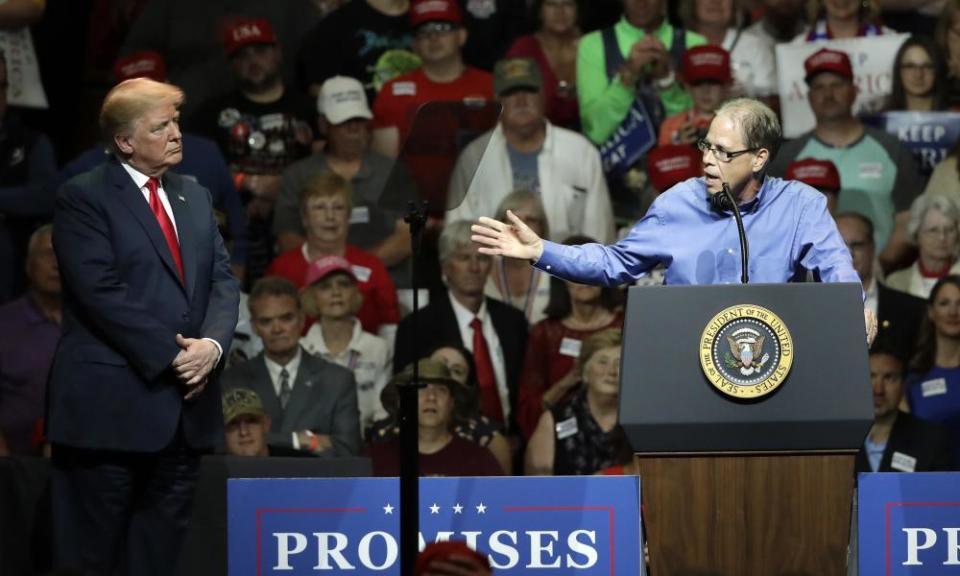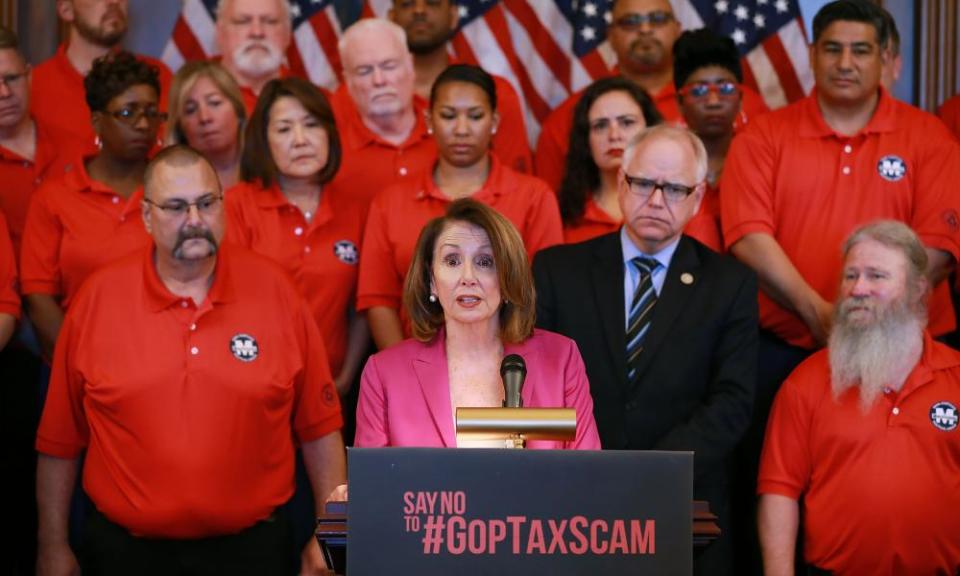Midterms 2018: Republicans sense signs that blue wave can be broken
History suggest a bumper year for Democrats but while Trump may be an electoral liability in some districts in others he is an asset

After months of hype about Democrats’ chances of taking back both chambers of Congress in the November midterm elections, Republicans are now more sanguine. The “blue wave” is not hitting every beach.
Donald Trump’s approval rating is rising, the economy is robust and there has been an apparent foreign policy breakthrough with North Korea. After losses in Virginia, Alabama and Pennsylvania, Republican confidence is up. While Democrats consistently lead in polls of the generic ballot, there is a sense, in the words of Republican strategist John Brabender, that “things are better today than 60 days ago”.
Trump is still unpopular. But while that may be a negative in competitive House districts where the president lost or performed worse than past Republican presidential candidates, he is a key asset in deep red states where incumbent Democrats will be on the ballot.
Brabender pointed out that even in the Pennsylvania special election, in which Conor Lamb upset Rick Saccone in a deep red district, a visit by Trump helped keep the race close.
“It’s not a matter of do you use the president or not,” said Brabender. “You have to use him tactically in places where he has a greater impact coming in.”
This was put on display on Thursday night in Elkhart, Indiana, as Trump held a rally in a vast high school gymnasium in front of a crowd of thousands. Although he went on his trademark diversions – discussing former basketball coach Bobby Knight and the new US embassy in London – the president also attacked the Democratic senator Joe Donnelly and praised his Republican opponent, Mike Braun.
Although Trump veered off message – calling Donnelly “Sleeping Joe” when Republicans have gone to great lengths to brand him as “Mexico Joe” – it was a small price to pay. The party can now cut television ads featuring Trump touting Braun. In 2016, Trump won Indiana by almost 20%.
Missouri, North Dakota, Montana and West Virginia also stage key Senate races in November. Trump won them all by significant margins.
Brabender did strike a note of caution, saying “the Senate is always an exception”. In 1994, for example, a year in which a Republican wave took the House, the GOP only managed to beat two incumbent Democrats in the upper chamber.
“Senate races are almost more like governor’s races,” Brabender said. “I don’t want to totally dismiss the national environment but people really get to know candidates very well.”
Another Republican strategist, who is working on a number of 2018 races, said Trump was not inherently an asset. “Every United States Senate candidate in the country ran ahead of [Trump],” he said, “and that shouldn’t be the model of how we win elections moving forward. It’s incumbent on us to nominate better candidates and minimize the damage.”
‘Their voters are willing to crawl across broken glass’
In the House, where Republicans have a 23-seat majority, the party faces a much more difficult task, particularly in moderate suburban districts. As the anonymous Republican strategist put it, the problem is that while Trump has energized Democrats, he has not energised moderate Republicans.
“Their voters are willing to crawl across broken glass and our voters are fat and happy,” the strategist said.
A former White House official offered a counter-argument: that “victory for Republicans in the House is not [achieved] by running away from Trump.”

In the former official’s view, Trump can energize Republican voters in suburban districts by putting impeachment on the ballot. In a swing district, the former aide said, although “Donald Trump is negative in that district because he’s viewed as more extreme, what’s more extreme is Nancy Pelosi trying to impeach him”.
In his view, if candidates can make the case that the Democratic minority leader “is a bigger threat than Trump, then Republicans won’t end up slaughtered come November”.
The former White House aide went so far as to claim that “if Republicans run smart races, [the] economy continues to improve, [and] President Trump continues to have wins, the blue wave could turn into a red volcano”.
History argues against him. Parties holding the White House have almost always suffered in midterm elections, particularly when the president is as unpopular as Trump. Then again, after Trump’s shock win in 2016 and in a political environment that ping-pongs between porn stars and Pyongyang, there are many more variables in play.

